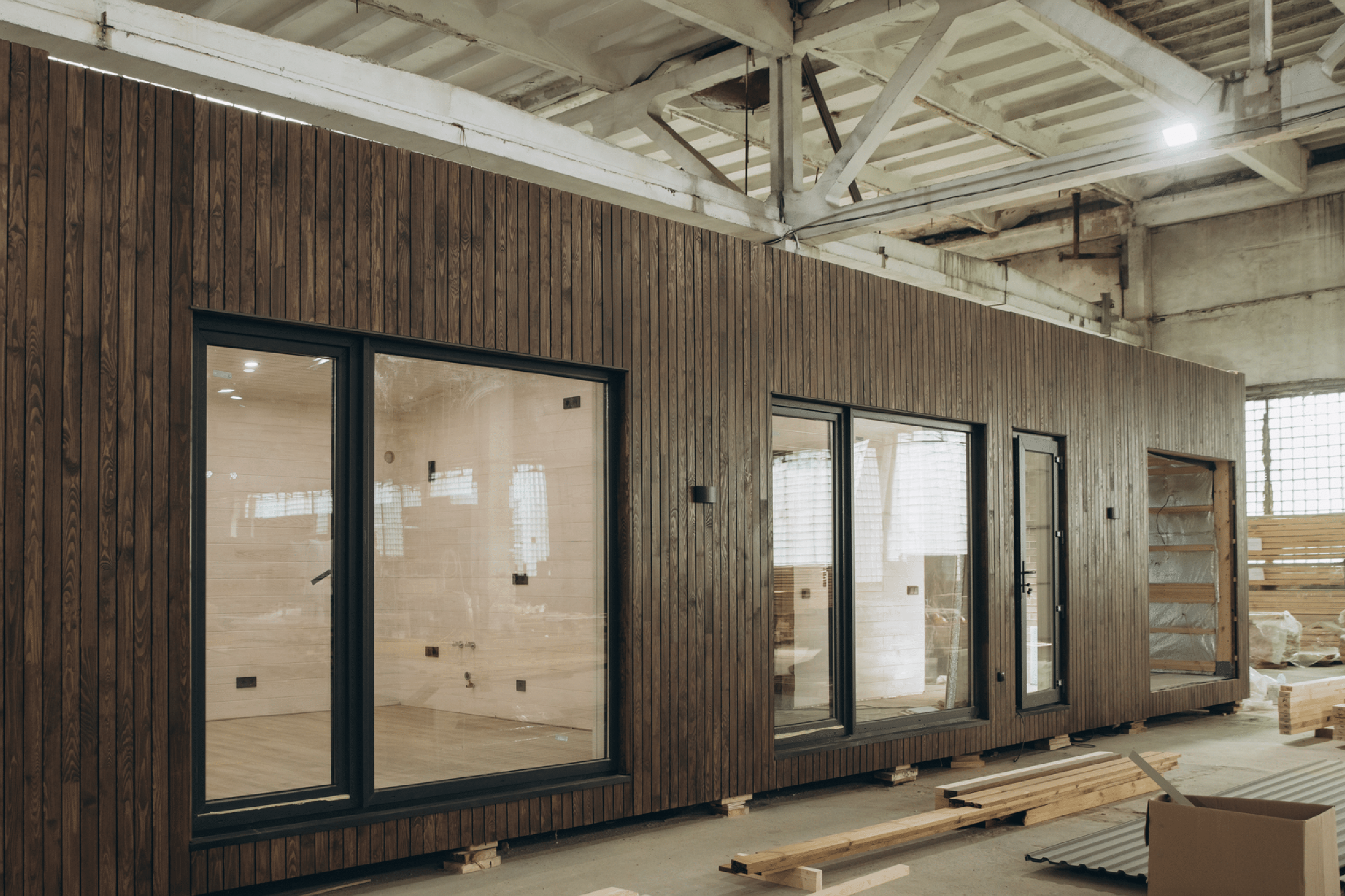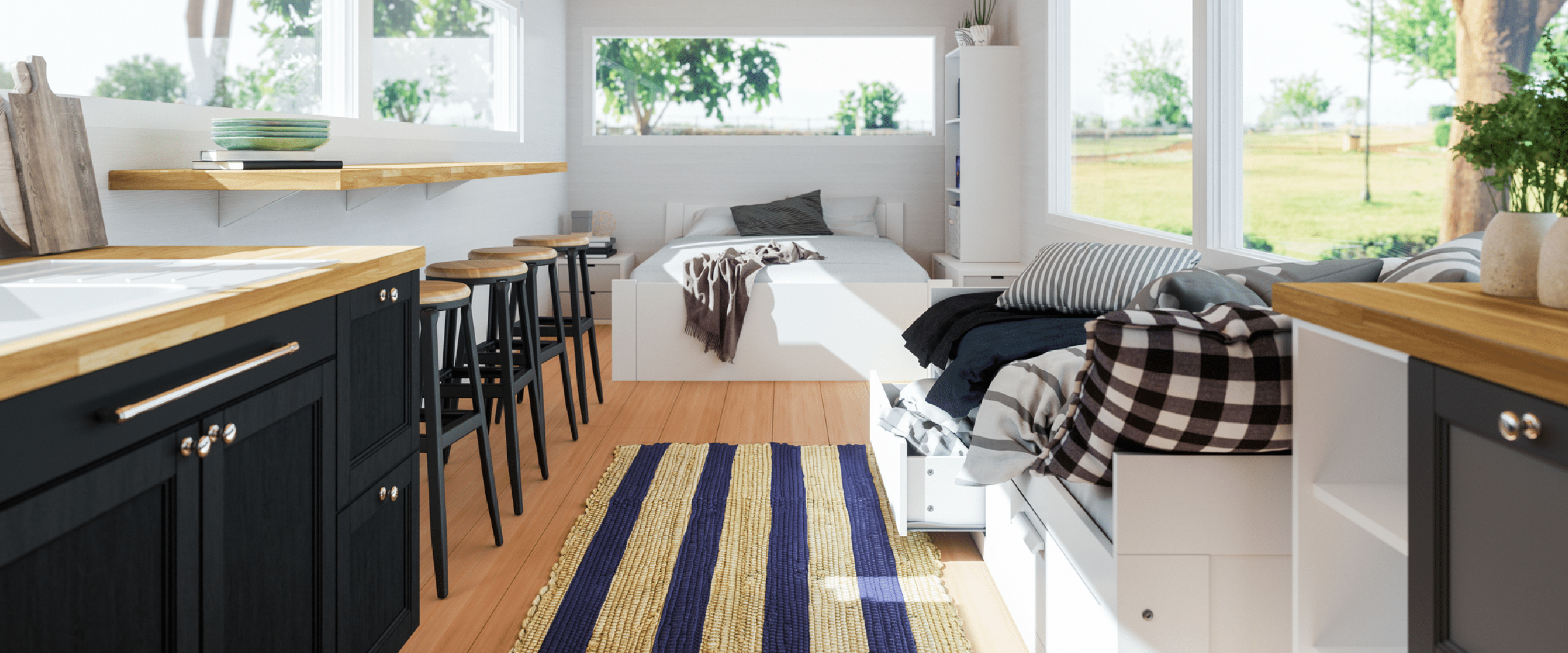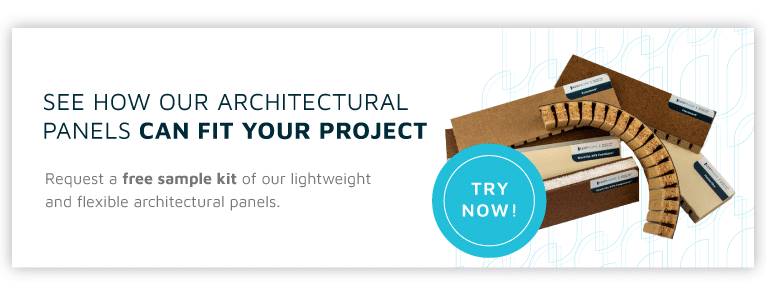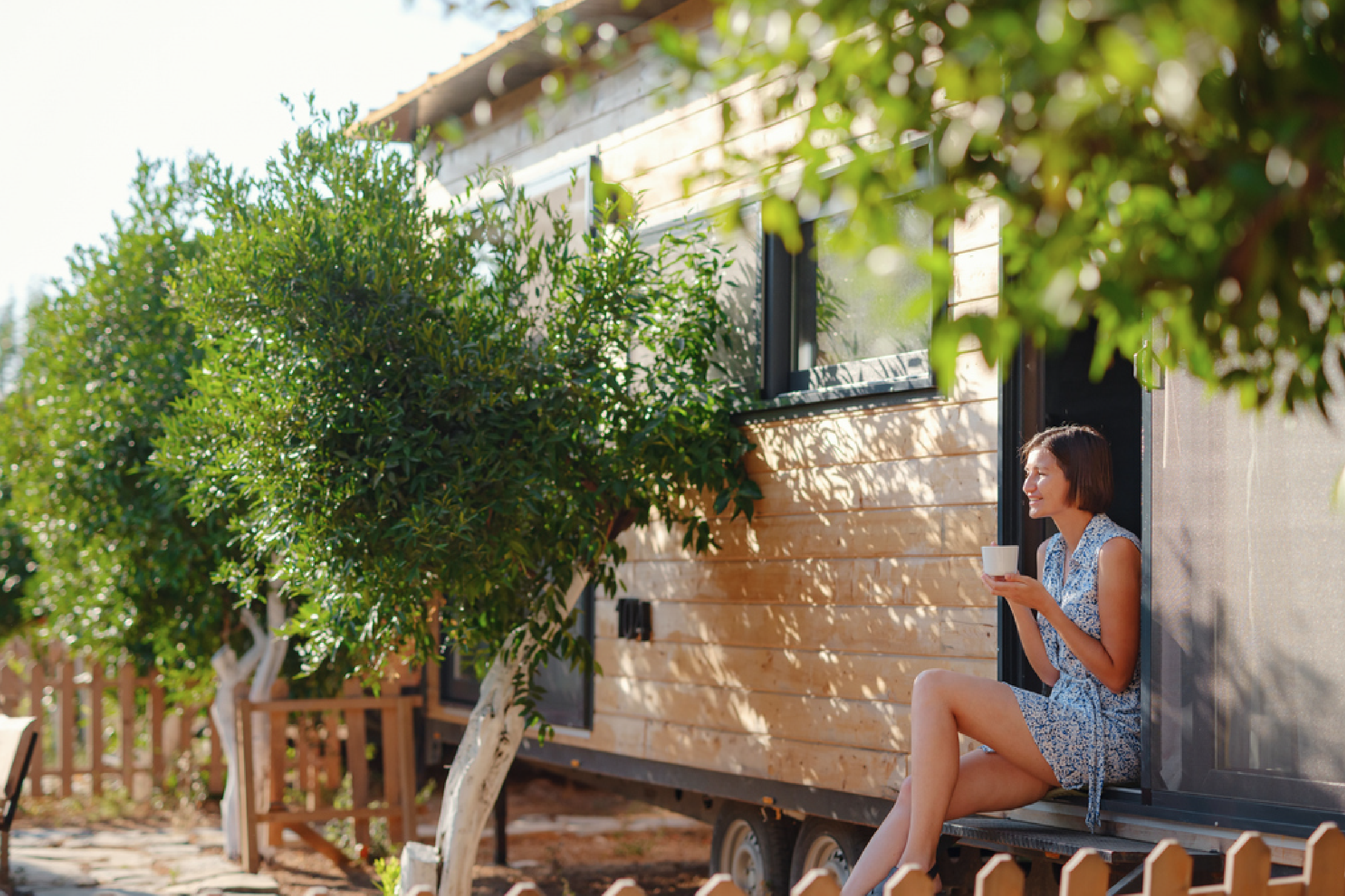
Building Tiny & Prefabricated Homes: Keys to Success
March 25, 2025As the desire for minimalist living and sustainable homes grows, tiny homes and prefabricated (prefab) homes have become increasingly popular options for those seeking an affordable, functional, and eco-friendly lifestyle. However, constructing such homes requires careful planning and attention to detail to make them functional.
Whether you’re designing a compact space or opting for a prefab model, there are several critical factors to consider to ensure a successful project.
1. Efficient Design & Space Utilization
Maximizing Small Spaces:
When it comes to tiny homes, every square foot matters. An efficient design will make use of every inch, ensuring that the space feels spacious despite its small size. Incorporating multifunctional furniture—such as fold-out beds, wall-mounted desks, or collapsible tables—can free up valuable floor space.
Additionally, creative storage solutions like built-in shelves, hidden compartments, and under-floor storage can help keep clutter at bay while maintaining a tidy, organized environment.
Customization:
Tiny homes and prefab homes both offer the opportunity for customization. Whether you want a cozy minimalist design or a more luxurious, personalized interior, tailoring the space to fit your lifestyle is essential. From floor plan choices to material selections, customization can make a significant difference in how comfortable and practical your new home feels.

2. Quality Materials & Structural Integrity
Durability:
Choosing the right materials is crucial, especially in smaller structures. Since space is limited, you need materials that are both durable and aesthetically pleasing. Consider high-quality, long-lasting materials such as steel framing, reinforced concrete, or weather-resistant siding to ensure the home remains sturdy over time.
Lightweight & Eco-Friendly Options:
Prefabricated homes in particular benefit from lightweight materials that facilitate easier transportation and assembly.
Additionally, opting for eco-friendly materials—such as reclaimed wood, recycled metal, or sustainable composites—not only benefits the environment but also contributes to the overall energy efficiency of the home.
3. Energy Efficiency & Sustainability
Insulation & Windows:
Efficient insulation and high-performance windows are essential for reducing heating and cooling costs. Properly insulated walls, floors, and ceilings can keep your home comfortable year-round. Similarly, energy-efficient windows, particularly those with double glazing, help to minimize heat loss and reduce the need for artificial lighting and temperature control.
Renewable Energy Integration:
To create a truly sustainable home, integrate renewable energy sources like solar panels or wind turbines. These can provide clean, free energy to power your appliances, lighting, and heating. Smart home systems, energy-efficient appliances, and water-saving devices can also help reduce your environmental footprint and lower utility bills.
4. Building Codes & Regulatory Compliance
Zoning & Permits:
Before you begin building, it’s crucial to understand the zoning regulations and obtain the necessary permits.
Tiny homes may face zoning challenges that can affect where they can be placed. Be sure to research local building codes and work with a professional to ensure your plans are compliant with regulations, including minimum size requirements, utility connections, and safety standards.
Safety Standards:
Both tiny and prefab homes must meet rigorous safety and structural requirements. These include fire safety regulations, foundation stability, and electrical and plumbing codes. Ensuring your home adheres to these standards is not only a legal obligation but also essential for the safety and well-being of its occupants.
5. Prefabrication Benefits & Quality Control
Controlled Environment:
One of the main advantages of prefab homes is that they are built in a factory-controlled environment. This reduces the risk of weather-related delays, as the components are manufactured in optimal conditions. Factory settings also allow for better quality control, ensuring that each piece meets high standards before it’s transported to the building site.
Speed & Efficiency:
Prefab homes offer faster construction timelines compared to traditional building methods. Once the components arrive at the site, they can be quickly assembled, significantly reducing the overall time spent on-site. This can be particularly beneficial for those on a tight schedule or with limited resources.
6. Budget & Cost Management
Cost-Effective Design:
The overall cost of building a tiny or prefab home can vary widely depending on the design, materials, and location. However, opting for efficient design and prefab construction can help manage costs. With fewer materials required, less labor involved, and shorter build times, prefab homes often come at a lower price point than traditional homes. Keep in mind, however, that there may be hidden costs such as transportation fees, permits, or site preparation that should be factored into your budget.
Investment in Quality:
While it might be tempting to cut costs by choosing cheaper materials or construction methods, investing in quality upfront can pay off in the long term. Durable materials, energy-efficient systems, and sustainable options will reduce maintenance and utility costs over time, making the home more affordable in the long run.
7. Logistics & Transportation
Modular Design:
Prefab homes are often built in sections or modules, which can be transported to the building site for assembly. The modular design ensures that the home is easy to transport and can fit on roads and highways. It’s essential to consider the logistics of getting the pieces from the factory to your location and ensure that the components are properly secured during transportation.
Assembly Considerations:
Once the modular components arrive, the assembly process needs to be smooth and efficient. A well-designed prefab home should be easy to assemble, with parts that fit together seamlessly. Work with experienced contractors who are familiar with prefab construction to ensure a hassle-free installation process.
8. Future Scalability & Maintenance
Long-Term Upkeep:
Designing your tiny or prefab home with future maintenance in mind is critical. Plan for easy access to essential systems like plumbing, electrical wiring, and HVAC, so repairs and upgrades can be carried out with minimal disruption. Opting for low-maintenance materials like vinyl siding or metal roofing can also save time and money in the long run.
Flexibility:
As your needs change over time, it’s helpful to have a flexible design that allows for modifications or expansions. Modular components, adjustable floor plans, or convertible rooms can give you the flexibility to grow your living space as your family or lifestyle evolves.
Products and Next Steps
Kerfkore products are an excellent choice for prefabricated and tiny homes due to their unique combination of durability, flexibility, and lightweight design. Made from high-quality materials, Kerfkore’s panels are engineered to be both strong and versatile, making them ideal for the compact and dynamic nature of tiny home construction. Their easy-to-cut and shape features allow for custom designs, enabling builders to maximize space without compromising on aesthetics or structural integrity.
Additionally, Kerfkore’s moisture-resistant properties ensure that the material stands up to various environmental conditions, which is especially important for homes on the move. Whether you’re looking for walls, ceilings, or furniture solutions, Kerfkore offers a reliable and cost-effective option for creating functional, beautiful, and long-lasting tiny homes.
Building tiny or prefabricated homes offers numerous benefits, from cost savings and sustainability to faster construction times. By focusing on efficient design, high-quality materials, energy efficiency, and compliance with local regulations, you can create a home that is not only practical but also comfortable and long-lasting. Thoughtful planning in areas such as logistics, budget management, and future scalability ensures that your tiny or prefab home will continue to serve you well for years to come.
Contact Kerfkore today to receive your free sample kit, featuring our lightweight and flexible products to see how our panels can elevate your project to the next level!




